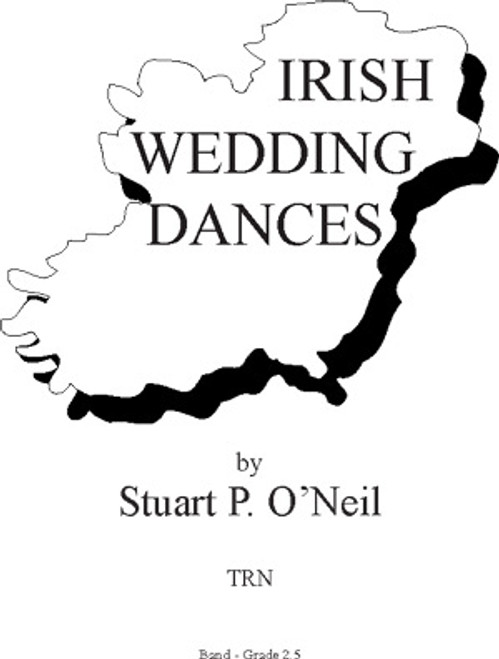Irish Wedding Dances was composed for and performed at the wedding ceremony of two very dear friends. Originally scored for strings and harp, the piece has been expanded into its current format for concert band. While not technically difficult, Irish Wedding Dances is an elegant piece appropriate for ensembles of all ability levels.
The first movement of Irish Wedding Dances is a stately processional; all lines should be played in a smooth, connected manner. The first theme is stated, then answered by a contrasting theme beginning in measure 17. This structure is repeated beginning in measure 33, creating an ABAB form. Although dynamic markings are provided, encourage the ensemble to naturally crescendo and decrescendo with the rise and fall of the melodic lines. The texture is contrapuntal; subdividing will help maintain rhythmic accuracy. Also, strive to keep the accompanying lines from covering the melody.
The second movement of Irish Wedding Dances is a festive recessional. Despite its forte dynamic level, it must remain light with clean articulation. The opening rhythmic motive in the alto saxophone and horn line occurs throughout the movement; releasing the tied quarter note on beat 2 and adding a tiny space before the sixteenth notes will add clarity to the line. Also, place a slight accent on the first note of eighth note pairs. The texture of the recessional is very rhythmic; the accompanying figures should all support the melodic lines and contribute to an animated dance quality.
- Composer: Stuart P. O'Neil
- 2.5
- 47
- 4:50






